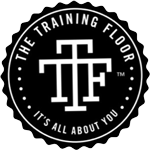No Pain No Gain?
When you hear “pain” and “exercise” in the same sentence, you probably think one of two things: “Heck, no!” or “Bring it on!” What comes to my mind? A bodybuilder grunting while heaving plates that are way too heavy or a runner wheezing on a treadmill set way out of their comfort zone. To be quite honest, I cringe when I hear that pain is required for exercise to be effective. Why in the world would I want to inflict pain on myself, especially when I enjoy exercise? Maybe you can relate.
This is an important topic for us to tackle because there are a lot of mixed messages about what it takes to see results from exercise. What really are the facts regarding exercise intensity?
“Good” Pain versus “Bad” Pain
While some level of discomfort can indicate exercise intensity, pain doesn’t always mean gain, and here’s why. Let me start by clarifying a very important difference between “good” and “bad” exercise pain.
“Good” pain is the slight muscle soreness in areas that you targeted during your previous workout. This discomfort likely means that your body is being challenged. This is a very positive feeling because exercise shouldn’t really be comfortable if you expect results. For exercise to be impact — that is, to create a healthier heart and improve body composition — it should be challenging.
On the other hand, “bad” pain means that you’re hurting your body instead of helping it. Examples of bad pain include a pulled muscle, achy joints or pain that increases over time.
